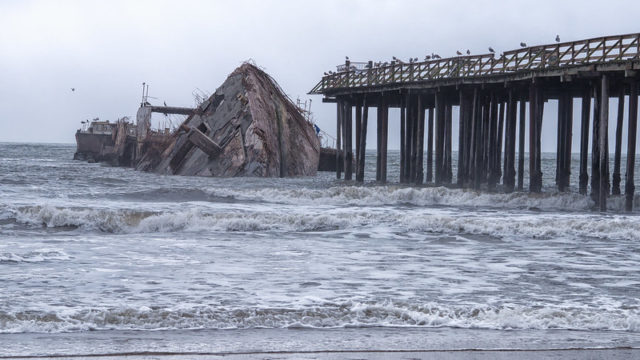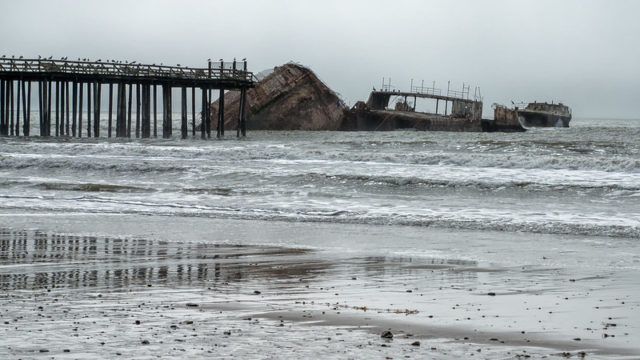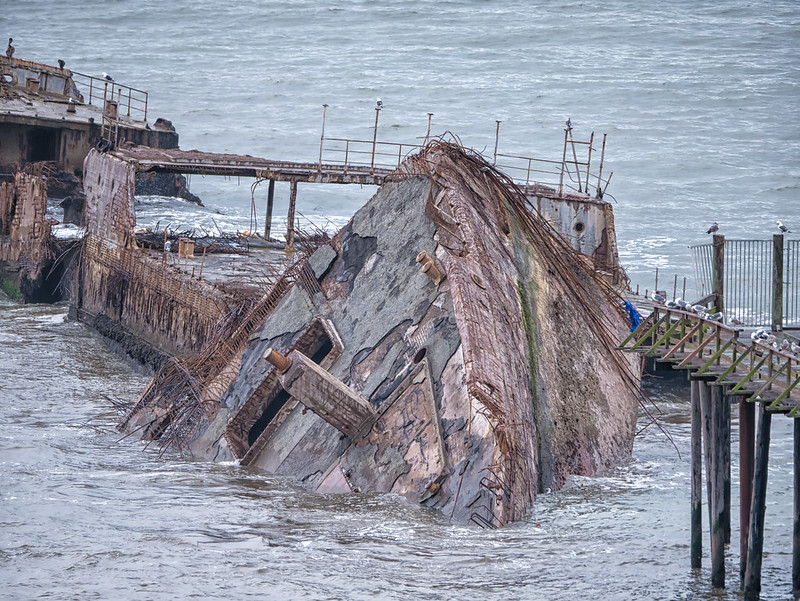The SS Palo Alto is an oil tanker that was supposed to serve in the First World War but was completed so late she never took part in any hostilities. Built in 1918, she currently lies just off the fishing pier on Seacliff State Beach in California. This ship is particularly noteworthy as she is made of reinforced concrete.
During the First World War, the United States faced a shortage of steel. Consequently, in 1917, President Woodrow Wilson approved an emergency fleet of ships made of reinforced concrete.
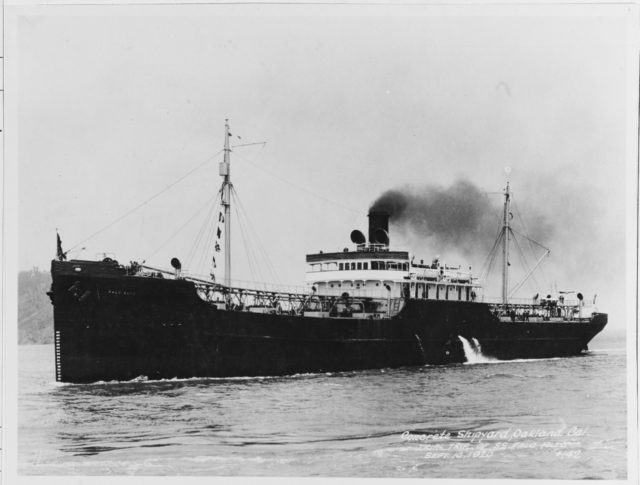
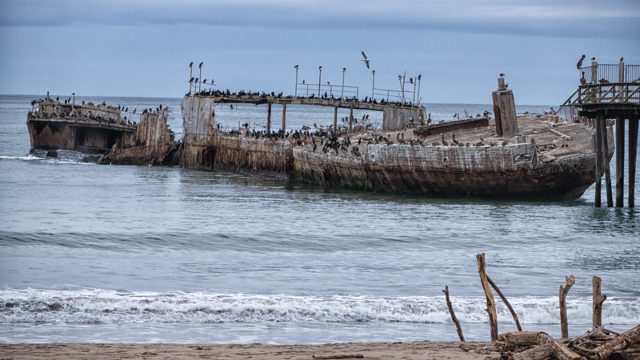
Construction of the 420-foot SS Palo Alto and two other tankers began in Oakland, California, in 1917. The SS Palo Alto was one of three concrete tankers built in California, and the intention was to use them to refuel other warships at sea during the war.
Her sister ship was named the SS Peralta, and both were launched in May 1919. Construction was completed quite late so that the ships never saw service in the war, which finished only months later.
Instead, the SS Palo Alto sat idle at a naval dockyard with no assignment in Oakland until 1929, when she was bought by a Nevada-based company called Seacliff Amusement Corporation.
This corporation controlled most of the property in the Aptos Township in California with the intention of developing attractive real estate for wealthy San Francisco residents. The company had tried to build a huge pier but was defeated by the inclement weather: large waves during frequent storms would demolish the pier and force construction to start all over again.
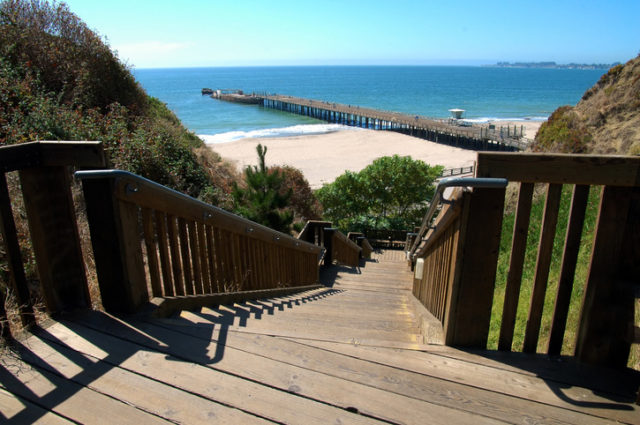
In an effort to overcome this problem, the company bought the SS Palo Alto in 1929. The Corporation thought she would be an excellent location for fun and fishing, so the ship was transported to the bay.
Initial ideas were to run excursions to the ship, but that didn’t prove popular. Instead, her hold doors were open to allow the water to flood in, and the SS Palo Alto was permanently grounded. A year later, a pier was built leading to the half-sunken ship.
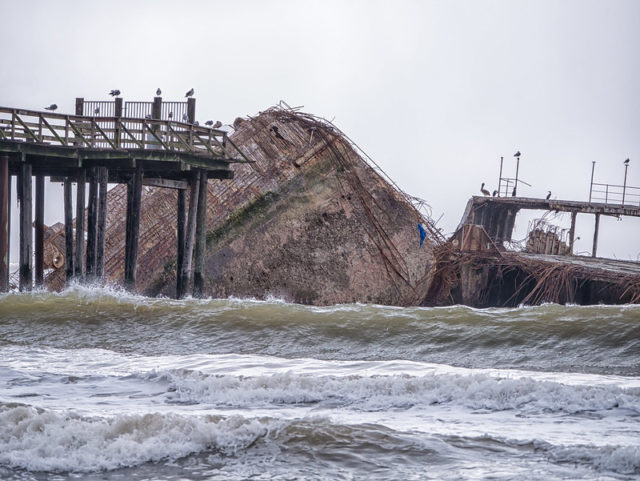
The ship was refitted to incorporate a casino, a dance hall, a heated swimming pool, and a restaurant. This attraction proved popular but only lasted two years because Seacliff Amusement Corporation went bankrupt in 1932 due to the seasonality of the business as well as the Great Depression.
Not long after the company went under, a winter storm ravaged the area and the SS Palo Alto was left with a huge crack in her midsection. After the ship was further damaged by the sea, the bankrupted owners stripped the vessel of all her valuable parts, such as steel, the engines, and even the dancefloor.
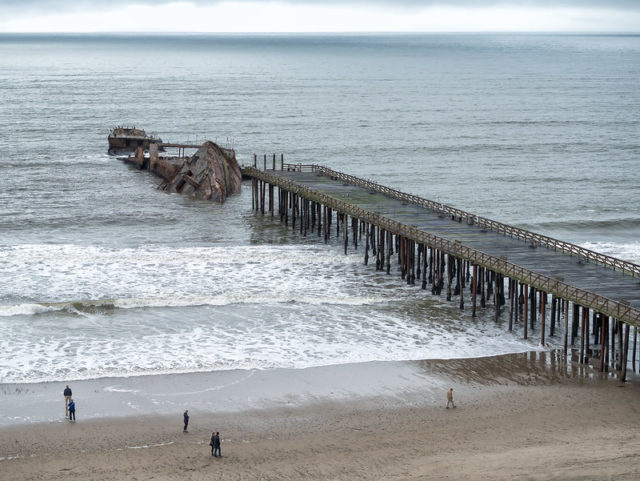
In 1936, the state of California purchased the ship for $1 and converted her into a fishing pier, which immediately became popular with local anglers. The SS Palo Alto became an official part of Seacliff State Beach.
The ship was visited by both fishermen and curious people until parts of her were closed in 1950 when the structure became unsafe. The condition of the ship had deteriorated greatly due to her exposure to storms.
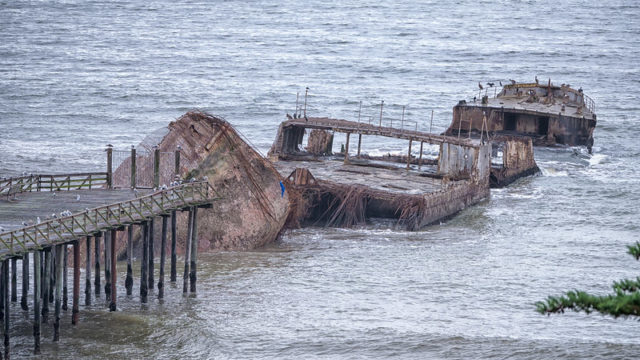
A restoration project that took place between 1983 and 1988 saw the ship open once again as a recreational spot, but only for a short time. In 1998, a permanent visitor ban was imposed on the SS Palo Alto.
In 2003, oil leaking from an unknown source resulted in dozens of seabird fatalities. In early 2005, the leak was traced to the SS Palo Alto. In the fall of 2006, the California Department of Fish and Wildlife began a cleanup project during which workers pumped 500 US gallons of oil from the ship.
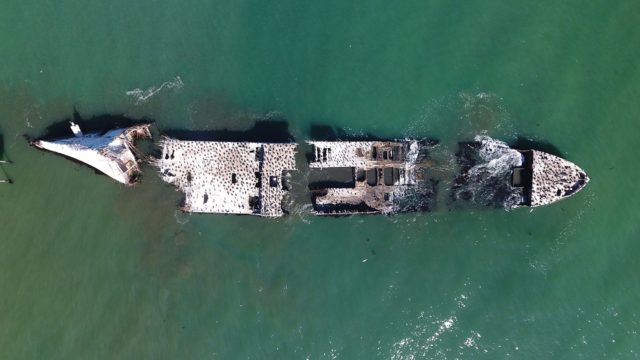
During the cleanup, the bodies of another 200 birds and two seals were also found inside the vessel. The project cost about $1.7 million, an amount equivalent to the sum spent on building the ship in the first place.
The ship continues to deteriorate and every storm sees her breaking apart a little more. In 2016, strong waves turned one of the pieces over to its side, and in January 2017, the stern was torn off.
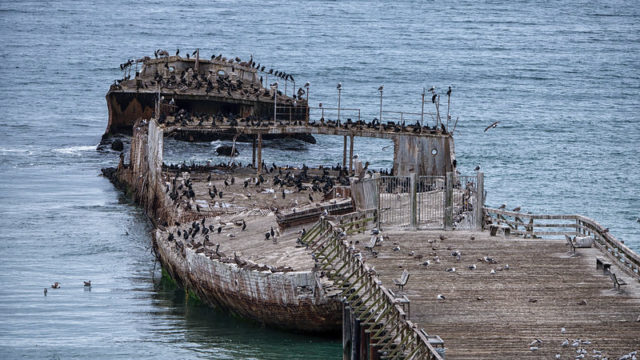
In atonement for its oil leaks, today the ship acts as an artificial reef for seabird and underwater life. It is often possible to spot seabirds such as pelicans and cormorants perched on the concrete structure. Below the surface, fish feed on algae and live inside the sunken parts. Sea lions and other marine mammals also visit the ship periodically.
Due to the poor condition of the SS Palo Alto, many have called on the state to remove the ship. However, disposal costs can reach tens of millions of dollars, especially as the ship is heavy and stands deep in the sand. Add to this the fact that the shipwreck has become a local attraction and that marine life is thriving around it, and there are plenty of objections to the vessel being removed.
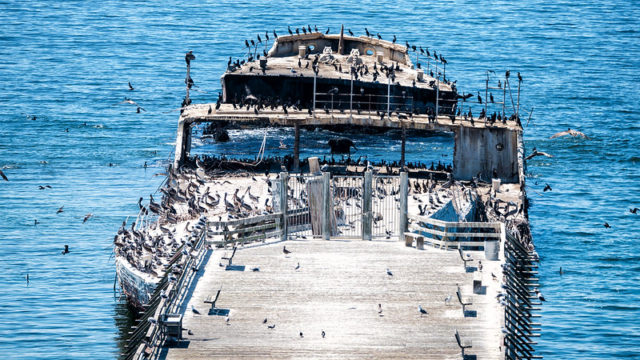
Currently, the SS Palo Alto is closed to the public. Fishermen, boats, divers, surfers, and everyone else must always stay 100 feet from the ship. In 2019, local organizations came together to hold a centennial celebration for the ship which has now become an icon of Seacliff.
Steven Rojo is the owner of these amazing photographs of the shipwreck in Aptos, California. A big thank you to him for giving us permission to share his photographs. You will find more of his pictures of the SS Palo Altro on his Flickr account via this link. Make sure to follow him on Flickr so as not to miss any of his beautiful work.
